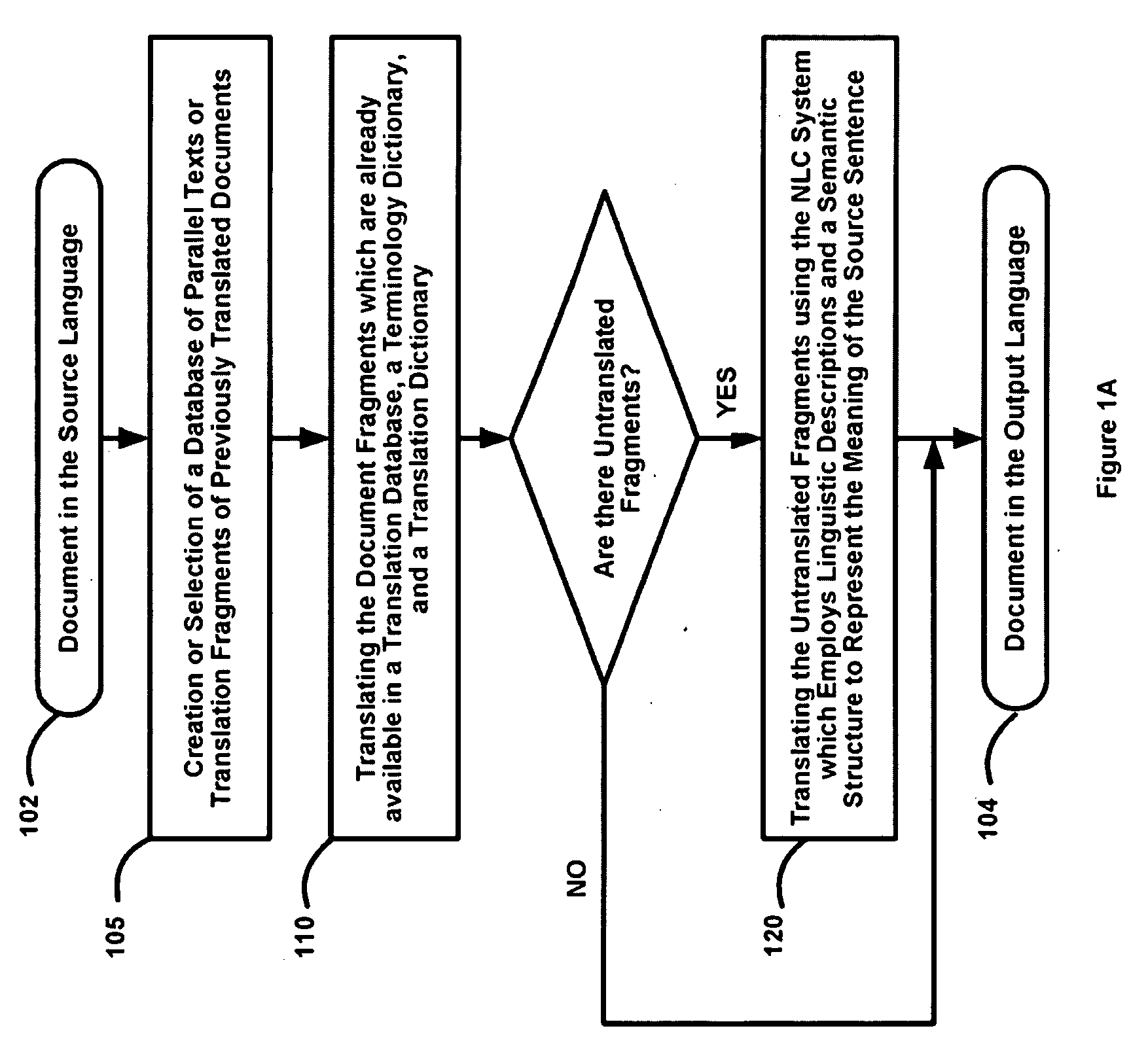Method for translating documents from one language into another using a database of translations, a terminology dictionary, a translation dictionary, and a machine translation system
a machine translation system and document database technology, applied in speech analysis, special data processing applications, instruments, etc., can solve the problems of limited approach when it comes to working with complex language phenomena, limited syntactic models and simplified dictionary descriptions, etc., to improve the efficiency and speed of such systems.
- Summary
- Abstract
- Description
- Claims
- Application Information
AI Technical Summary
Benefits of technology
Problems solved by technology
Method used
Image
Examples
Embodiment Construction
[0052]Embodiments of the invention provide a hybrid method and computer systems configured to efficiently and completely translate a document in an input language into an output language. The method combines the benefits of the Example-Based MT and Model-Based MT. To translate document fragments for which ready translations may be available, advanced methods of Example-Based MT are used employing both ordinary searches and fuzzy searches and subsequently replacing the differing parts with translations from a terminology or translation dictionary. Syntactically coherent output is provided by system automatically.
[0053]The rest of the document (i.e. the “untranslated fragments”) may be translated by means of the NLC system, which analyzes each sentence, recognizes its linguistic structure and semantics in order to “understand” its meaning. Exhaustive linguistic descriptions are used to analyze a sentence in the input language and to build its language-independent semantic structure an...
PUM
 Login to View More
Login to View More Abstract
Description
Claims
Application Information
 Login to View More
Login to View More - R&D
- Intellectual Property
- Life Sciences
- Materials
- Tech Scout
- Unparalleled Data Quality
- Higher Quality Content
- 60% Fewer Hallucinations
Browse by: Latest US Patents, China's latest patents, Technical Efficacy Thesaurus, Application Domain, Technology Topic, Popular Technical Reports.
© 2025 PatSnap. All rights reserved.Legal|Privacy policy|Modern Slavery Act Transparency Statement|Sitemap|About US| Contact US: help@patsnap.com



